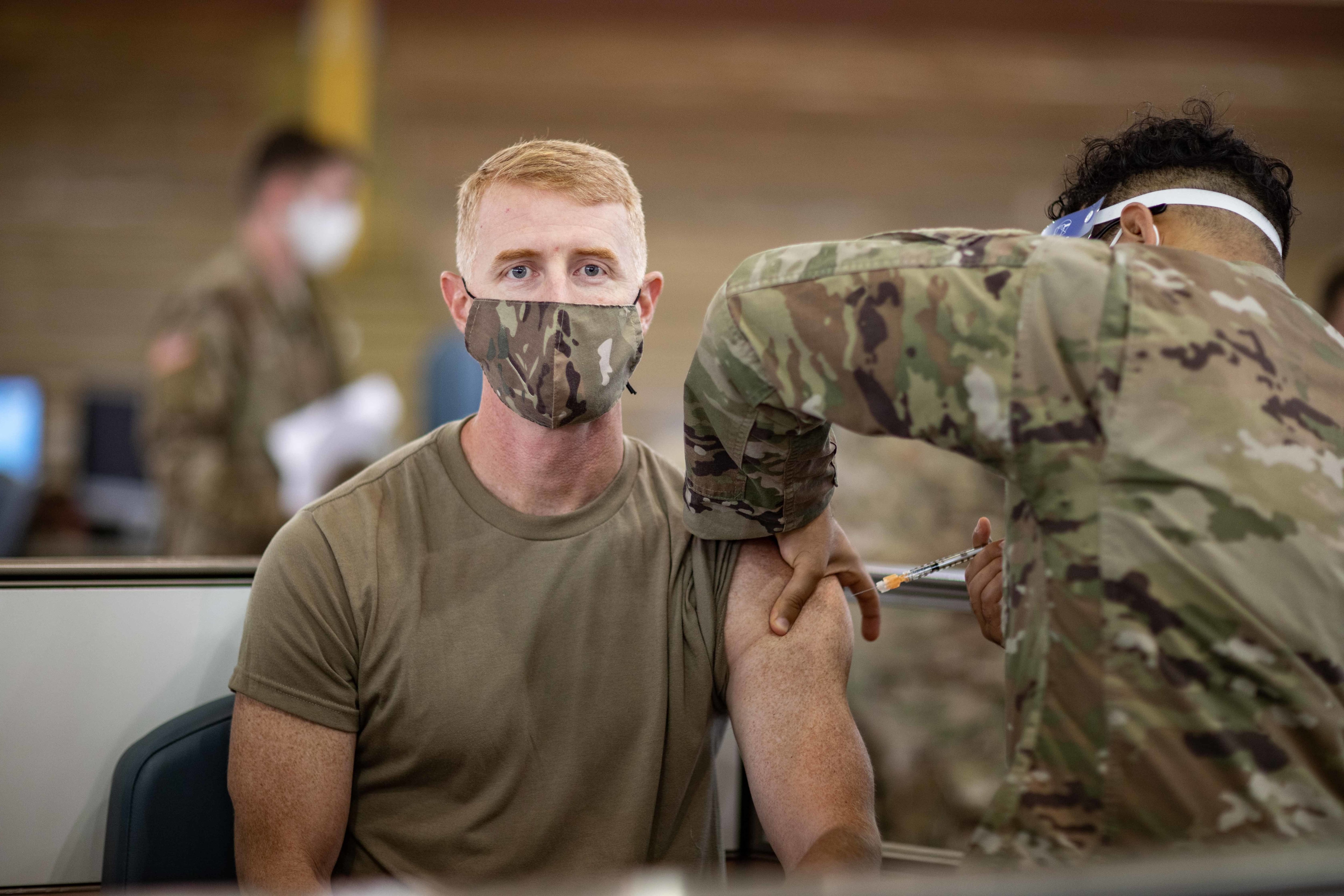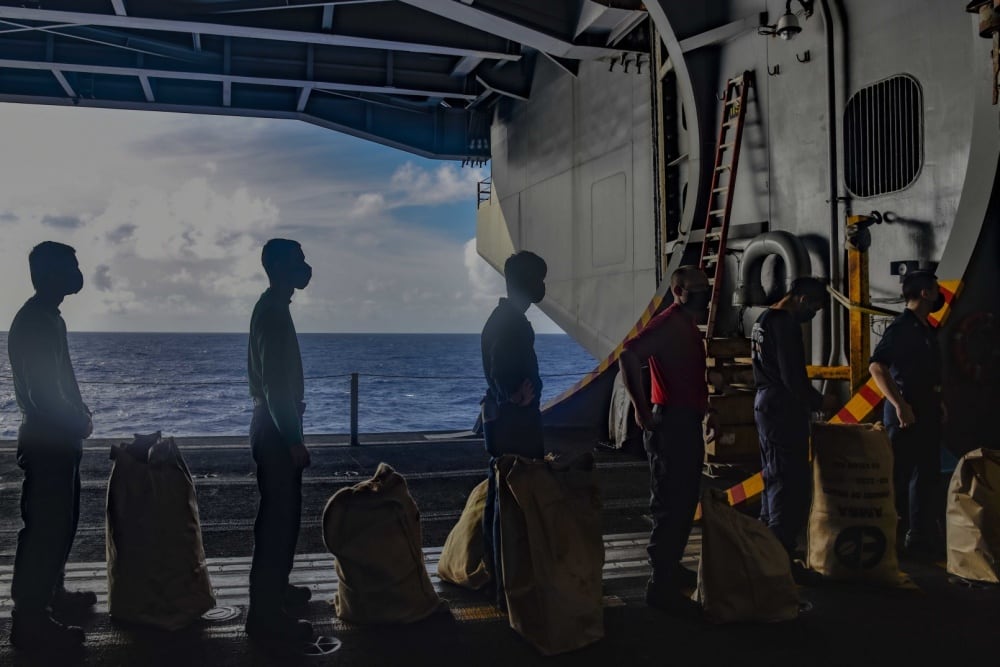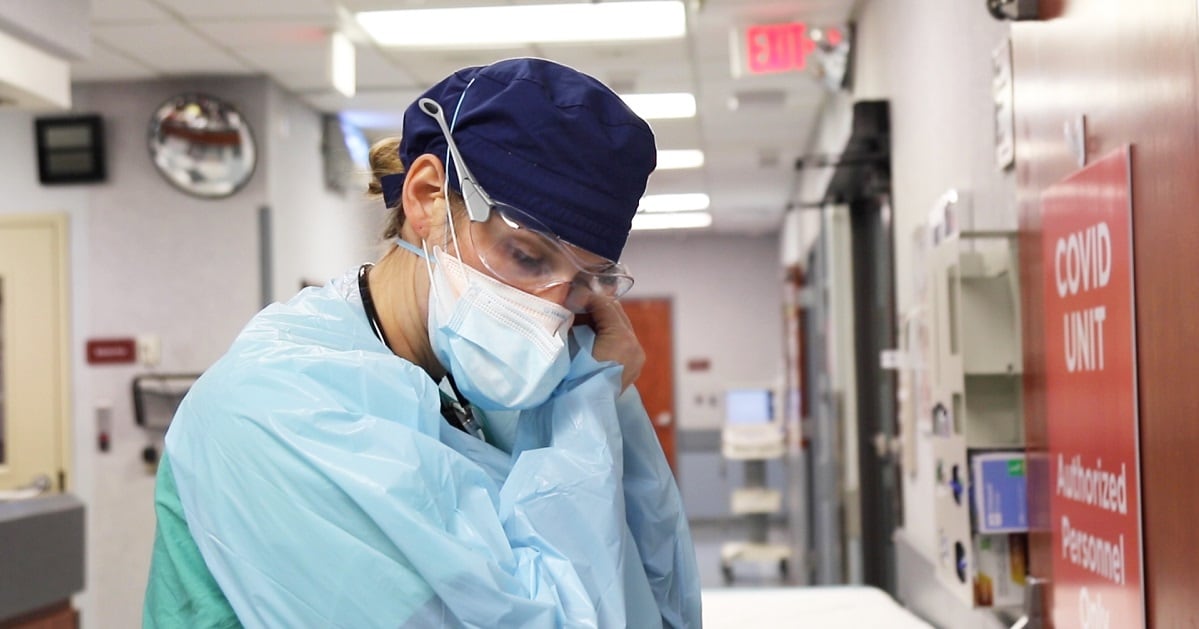When the Air Force’s 23rd Wing prepared to deploy to Afghanistan as it fell to the Taliban over the summer, their biggest obstacle wasn’t aircraft or training. It was a staffing shortage caused by unvaccinated airmen.
Faced with a choice to get vaccinated against the coronavirus or stay home, 33 combat search-and-rescue airmen opted to receive their first shot of the Moderna vaccine at home and the second overseas, the Air Force said. The Georgia-based airmen arrived in Afghanistan less than a week after their first dose.
The last-minute inoculation effort illustrates the challenge that anti-vaccination sentiment poses to the military going forward.
RELATED

Readiness has become a go-to argument for military officials trying to convince troops to protect themselves and others against COVID-19 — and for those who say reprimanding or kicking out service members who refuse a shot will harm military strength.
All eyes are now on the active-duty Air Force and Space Force, which set Nov. 2 as their deadline for airmen and guardians to be fully vaccinated, the first of the services’ multiple deadlines.
All of DoD’s civilian employees must be fully vaccinated by Nov. 22, followed by the entire Navy and Marine Corps on Nov. 28. Time’s up for Air National Guard and Air Force Reserve personnel on Dec. 2; for active-duty soldiers on Dec. 15; and for Army reservists and guardsmen on June 30, 2022.
As of Oct. 27, 64 percent of the total force was fully vaccinated ― more than 1.4 million troops ― with another 13 percent ― just under 300,000 ― who have received the first of a two-dose regimen.
That leaves more than half a million troops who are completely unvaccinated.
In comparison, 67 percent of Americans ages 12 and older were fully vaccinated as of Oct. 22, the Centers for Disease Control and Prevention said.
RELATED

As the first deadline passes, the Department of the Air Force will offer a blueprint for what to do with troops who refuse to get a coronavirus vaccine, said Kate Kuzminski, a military personnel expert at the Center for a New American Security.
She’ll be watching how quickly the Air Force responds through the Uniform Code of Military Justice, and whether it consistently doles out punishments that could restrict veterans’ benefits.
The department must also handle airmen and guardians who have already received a first dose of either the two-shot Pfizer-BioNTech or Moderna vaccines, or the one-shot Johnson & Johnson vaccine, but have not yet reached their second dose or finished the two-week waiting period after the final shot to be fully protected.
“They’re signaling good faith to follow through,” Kuzminski said. “There should be a grace period for those individuals.”
Military readiness depends on troops’ willingness to comply with the mandate, because commanders need to know that everyone in their unit is deployable, she said. Compliance also indicates whether a service member will follow other lawful orders.
The widespread COVID-19 outbreak aboard the aircraft carrier Theodore Roosevelt in 2020 offered a live look at how infections can grind missions to a halt.
RELATED

“The most immediate impact is on the ability to man watches in confined engineering spaces, but the cascading effect on training, maintenance and repair can affect numerous readiness areas,” according to a recent Rand Corp. report on COVID-19 and naval ship readiness.
It could set off a domino effect for units who might see longer deployments while other infected crews recover. Systems maintenance, professional development, mental health and retention could also suffer as units take steps to keep the virus from spreading.
The effect of vaccines on readiness will depend on how spread out the refusers are. If they are the lone dissenter in a shop, the impact would be more limited than in a unit where most members are unvaccinated and unable to perform their mission.
Losing 10,000 unvaccinated people, or the equivalent of multiple Air Force wings, would affect overall force preparedness, Kuzminski said. She’s more concerned about Guard and Reserve units, where more part-time service members in low-vaccination areas may bring those convictions to the military. For example, 83 percent of active-duty Marines were fully vaccinated, while only 47 percent of reservists as of Oct. 20, the Marine Corps said.
Vaccination is vital to the Reserve and Guard, particularly for keeping troops healthy as they mobilize to help local health care staffs dealing with coronavirus patients and to administer shots, added William Razz Waff, a retired Army major general and executive director of the Military Chaplains Association.
RELATED

Kuzminski anticipates judge advocate generals will be bogged down with an avalanche of paperwork related to vaccine refusers for the foreseeable future, pulling attention away from other duties like prosecuting sexual assault or domestic violence.
In the long run, vaccine opposition poses a hurdle to recruitment as the pool of eligible and interested Americans is already waning. The Air Force has already discharged about 40 people from basic military training and technical training because they won’t get the jab, the service said Oct. 20. That includes 23 BMT trainees who were booted as of Oct. 26.
Air Force spokesperson Ann Stefanek said recruits have been briefed on the vaccine requirement and the consequences of refusing it since Sept. 12. As of Oct. 10, trainees must also sign paperwork stating that they understand the requirement to receive all vaccines, including the COVID-19 vaccine, upon entry into the service.
Turning prospects down is “a clear indicator that the military is not messing around with the standards that they put out,” Kuzminski said.
Marine Corps Times reporter Philip Athey contributed to this article.
Correction: This story has been updated with corrected vaccination figures. As of Oct. 27, 64 percent of the total force is vaccinated, while 87 percent of the active-duty force is fully vaccinated. In addition, 299,150 service members have been partially vaccinated.
Rachel Cohen is the editor of Air Force Times. She joined the publication as its senior reporter in March 2021. Her work has appeared in the Washington Post, the Frederick News-Post (Md.), Air and Space Forces Magazine, Inside Defense, Inside Health Policy and elsewhere.




